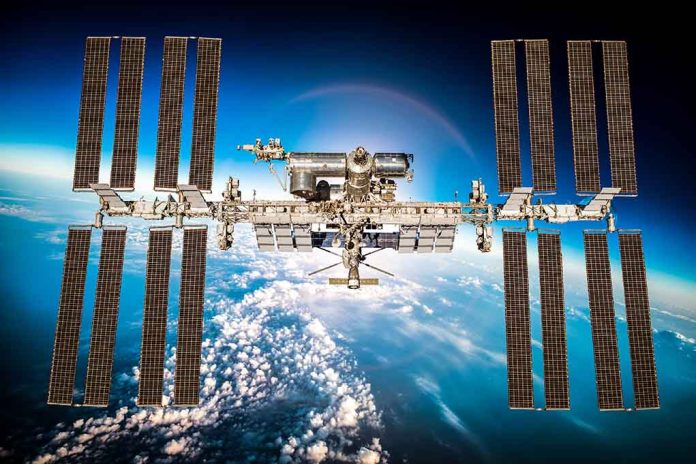
Russian military satellites have released a mysterious object into orbit, raising alarms about potential space weaponry as U.S. officials track the unusual activity 364 miles above Earth.
Key Takeaways
- A trio of Russian military satellites—Kosmos 2581, 2582, and 2583—have released an unidentified object into orbit, detected by U.S. Space Force on March 18.
- The satellites have been conducting “proximity operations,” maneuvering close to other objects in space, suggesting possible testing of offensive or defensive capabilities.
- Russia has not disclosed information about these satellites or their mission, maintaining their classified status.
- This activity heightens concerns about a potential space arms race, especially after Russia vetoed a UN resolution to prevent nuclear weapons in space.
- Both Russia and China are reportedly developing new orbital combat capabilities, treating space as an active strategic theater.
Mystery Object Detected in Near-Polar Orbit
The United States Space Force has identified a new object believed to have separated from Russian military satellite Kosmos 2583 on March 18. The trio of Russian satellites—Kosmos 2581, 2582, and 2583—have been under close observation since their launch due to their unusual behavior. According to tracking data, these satellites have maintained a near-polar orbit approximately 364 miles above Earth, conducting what experts describe as proximity operations.
The purpose of this mysterious object remains unclear. Analysts suggest it could serve various military purposes, including experimental testing, satellite inspection capabilities, or target practice for anti-satellite weapons. Some experts have proposed it might involve testing flying or docking technology, while others have suggested it could be the result of unintentional fragmentation—though typically such events produce multiple debris pieces rather than a single object.
Russian Satellite Trio Just Dropped Something Weird in Orbit https://t.co/IUhWiNVLbM
— Gizmodo (@Gizmodo) April 9, 2025
Growing Pattern of Russian Space Activity
This is not the first instance of concerning Russian activity in orbit. In 2022, Russia conducted tests involving Kosmos satellites performing close fly-bys of a U.S. spy satellite and reportedly testing high-velocity shell firing capabilities. U.S. officials suspect the Kosmos 2553 satellite, launched in February 2022, may have been testing components for a potential Russian space weapon. These activities follow a pattern that security experts find increasingly troubling.
The “Kosmos” designation has been used since 1962 for a wide range of Soviet and Russian military and scientific satellites. While satellite trios flying in formation are not unprecedented—with similar launches conducted by the United States and China for electronic intelligence and other purposes—the secrecy surrounding these particular satellites and their unusual behavior has raised red flags among Western intelligence agencies.
International Concerns About Space Militarization
Concerns about a space arms race have been heightened by suspicions that Russia aims to deploy nuclear weapons in orbit, potentially targeting satellites rather than ground targets. Russia’s veto of a UN resolution aimed at preventing a nuclear arms race in space has only intensified these worries. The destruction of satellites could create significant debris fields that pose threats to other space technology, including critical civilian infrastructure and the International Space Station.
China is simultaneously advancing its own space capabilities, conducting tests of nuclear-capable hypersonic vehicles and developing anti-satellite weaponry. Both Russia and China are reportedly exploring new orbital combat capabilities. These activities suggest that space is increasingly being treated as a domain for strategic confrontation, with technologies being developed specifically to disable or destroy enemy space assets.
Calls for International Space Norms
The U.S. has increased surveillance of Russian and Chinese space activities due to mounting evidence of new offensive capabilities being tested in orbit. Space is now treated as an active strategic theater by Washington and its allies, prompting calls for clear international norms of behavior in space. As tensions rise and technologies advance, the militarization of space threatens to create new vulnerabilities in global security infrastructure that relies heavily on satellite technology.
Without international agreements on space conduct, the risk increases that misunderstandings or aggressive actions could trigger wider conflicts. The future activities of the Kosmos satellites and the newly detected object remain uncertain, but their behavior will be closely monitored as indicators of Russia’s true intentions in space. As these developments unfold, they highlight the urgent need for diplomatic efforts to establish guardrails for military activities beyond Earth’s atmosphere.









